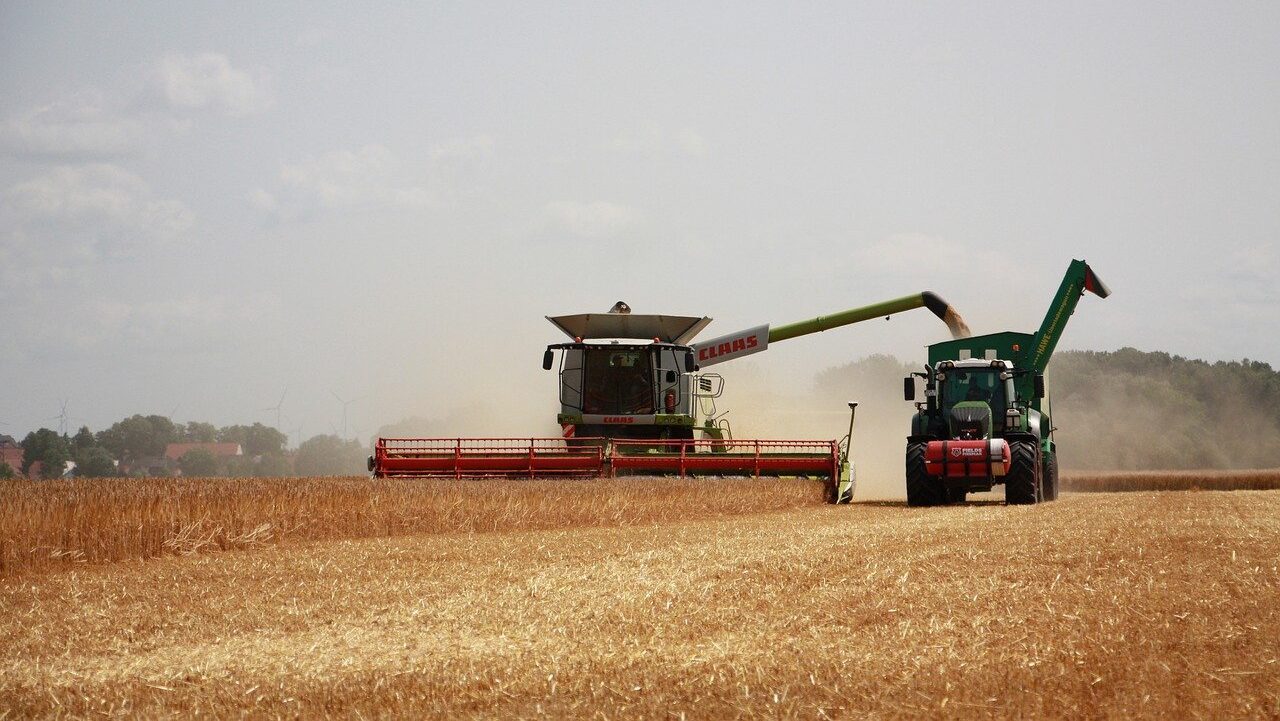Finally, a new Farm Bill. After two years of debate — hamstrung by stalled negotiations and lack of compromise — the Ag leaders in the House and Senate committees finally worked out an agricultural and food assistance act for the next five years.
Reading the press releases by the House and Senate committee chairs, you would think a host of “major reforms” have taken place. But the structure of agriculture is still very much unchanged, and the 2014 agricultural act doesn’t seem substantively different from past farm bills. Well-off farm operations (and their investors) will continue to receive generous subsidies.
Despite this criticism — and despite the fact that federal farm policy still has a 20th century mentality for industrial production over the 21st century movement towards health and sustainability — Catholic Rural Life is reluctantly calling for passage of the new farm bill. The President should sign it when it reaches his desk. It’s time to move on and work in other ways to improve our food system.
I can well appreciate that House and Senate agriculture leaders were “relieved” to announce a bipartisan, bicameral agreement on a five-year farm bill that took a long-time to come about. They have not hidden the fact that they were sick and tired of negotiating a new bill since the previous one initially expired at the end of 2012.
Putting the spin on “reform”
In one of their press statements, they say that the new bill will “reduce the deficit, grow the economy and provide certainty to the 16 million Americans whose jobs depend on agriculture.” I guess it does provide some certainty, certainly for farmers who are planning for spring plantings and simply need to know what to expect from government support programs.
As for reducing the deficit and growing the economy, that remains to be seen. Market prices for agricultural commodities go up and down; agricultural inputs like seeds, chemicals and energy just seem to go up. If crop prices do fall, and most likely they will during this farm bill, the American taxpayer will be propping up the American farmer for the benefit of global corporate businesses.
So when federal policymakers tell us that they have eliminated the Direct Payments* farm subsidy program, we need to ask where the subsidies will now come from. The “major reform” policy is to shift to Crop Insurance subsidies. That means the government will help cover crop insurance for farmers, and not just for crop losses in the field. The insurance also covers revenue or income loss due to low prices
Taxpayers would save money when prices are high, but when prices fall — and if they fall significantly — we will be spending a lot more money on farm subsidies than we did under the old programs. High subsidy payments could go on for two years or more.
*For almost two decades, commodity crop farmers (such as corn, soybean, cotton, rice and wheat) have received annual “direct payments” from the government. This is an automatic or “direct” payment every year: farmers receive the payment even if they had great yields and prices were high. Last year, those direct payments cost taxpayers about $4.5 billion.
Missed opportunity for real reform
What would have been actual and much-needed reform is payment limits. Strangely enough, both the House- and Senate-passed bills going into conference had these provisions. Somehow the final farm bill emerged out of conference without payment limits. This is the amount of money paid to a farm operation; it also limits the number of “managers” (read “off-farm investors”) who can receive payments.
Catholic Rural Life fully supports payments to farmers who live and work on the land themselves, particularly small and medium-sized farms trying to support a family. We do not support payments to mega-farms with multiple “managers” who do not live on the land and in fact might be hundreds of miles away in cities.
The new bill also drops a reform passed twice by the Senate that would have modestly reduced insurance subsidies to millionaires. Yes, there are millionaire farmers out there; do we really need to be providing them government support to make a go of it on the land?
A word about conservation programs
The folks who are familiar with our advocacy work know that Catholic Rural Life has been a long-time supporter of conservation programs. Indeed, we have called for a transfer of federal funds from Commodity programs to Conservation programs as the better way to support farms and ranches in our country. Ensuring sufficient production year after year is crucial, of course, but so is safeguarding soil and water resources on which continuing production depends. What better way than to create incentives and reward farmers and ranchers for conservation stewardship.
In their press statements, policymakers are saying that the new farm bill renews a national commitment to protect land, water, and other natural resources. It is true that various conservation programs have funded for another five years, but the actual levels of funding have gone down for some — despite great popularity among farmers and ranchers across the country. (By the way, all farmers – not just commodity crop farmers – are eligible to sign up for conservation programs and payments.)
Conservation program levels
Overall, the bill provides $57 billion over ten years for conservation programs that will remain available until expended. This amount represents a total cut of $6 billion in the bill to conservation. However, the bill provides the following:
- Reauthorizes the Environmental Quality Incentives Program (EQIP) at $8 billion.
- Provides for 10 million acres per year to be enrolled in the Conservation Stewardship Program (CSP).
- Allows for retaining or enrolling of up to 24 million acres of fragile lands to be enrolled in the Conservation Reserve Program.
- Reauthorizes $2 billion for conservation easements through the Agricultural Conservation Easement Program (ACEP).
- Provides $1 billion for targeted conservation through the Regional Conservation Partnership Program (RCPP).
The bill also links conservation compliance with crop insurance premium assistance. For the first time since 1996, farmers receiving federal crop insurance premium subsidies will be required to have conservation plans on their farm to guard against highly erodible soils and to protect wetlands.
One other thing: The bill includes a Sodsaver provision to reduce grassland conversion in the prairie pothole region. In other words, taxpayers will not support farmers who convert important grasslands to crop production, thus providing additional safeguards for fragile lands.
Some support for local farmers, local food systems
The bill also reinvests significant funding in beginning farmers, farmers markets and local food production, all of which help farmers remain economically viable and assists them in remaining on their land. Here’s how some of the money will be spent:
- Reauthorization of $63 million for Value-Added Producer Grants to remain available until spent, and the availability of an additional $40 million per year in discretionary funding.
- Beginning Farmers and Rancher Development provides $100 million in mandatory funding and the availability of an additional $30 million per year in discretionary funding.
- Farmers Market Promotion will receive $150 million as well as the availability of an additional $10 million per year in discretionary funding.
- Specialty Crop Block Grants are reauthorized at $72.5 million per year, and $85 million in fiscal year 2018.
Final word on federal policy
Catholic Rural Life is part of the sustainable agriculture community which is critical of the process that has led to completion of the 2014 farm bill. The apparent backroom deals do not represent the kind of democratic process we deserve as citizens. As devoted farm and food advocates, we believe our voice is as necessary as commodity organizations and agribusiness interests. Who else can articulate enlightened policies for a new agriculture of sustainable practices and vibrant rural communities?
Yet we are not standing in the way of the new farm bill. Given a lengthy two-and-a-half year process and the importance of renewing funding for important programs over the next several years, we support passage of the bill.
That being said, we will not stop in working for real reform in farm and food policies. Much can be done at the local, state and regional levels. Much can change on the farm by the food choices we make at the store. Remember, eating is a moral act!














